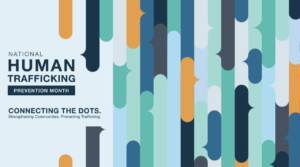John Wanamaker, the late department store magnate, once stated, “Half the money I spend on advertising is wasted. The trouble is I don’t know which half.” In the age of big data analytics, that statement becomes less true every day. Mitch Barns (@MitchBarns), CEO of Nielsen, explains, “Supported by more and better data, and evolving technology and tools, marketers are able to be more precise with their advertising today than ever before. More precision means less waste — less advertising directed at people who won’t respond. Less waste means a better return on investment. As the ROI of advertising improves, brands allocate a greater portion of their total marketing spend, and a greater portion of their brand’s revenues, to advertising. … Better data, more sophisticated data integration and the growing role of ad tech and marketing clouds will continue to fuel the increase in advertising’s share of total marketing spend and total brand revenue.”[1] There is, however, a dark side to targeted marketing of which brands and marketers need to be aware. A Stanford University study “found that the most personalized ads were less effective because consumers worried they were being exploited.”[2] In other words, there is a fine line between personalized advertising and creepy marketing.
A couple of years ago, a survey conducted by Experian Data Quality concluded, “Those who can master the art of personalization stand to see improvement across a handful of processes. Customer prioritization and cross-sell/upsell offers were the top processes improved by personalization, cited by 69% and 63% of respondents to the Experian survey, respectively. Relevancy and loyalty offers (58%), brand integrity (51%) and efficiency in internal routing (49%) also saw enhancements thanks to personalization efforts.”[3] Note that the key to improvement was “mastering” the art of personalization. Big data is just data (albeit lots of data); and, having it means little if it lies fallow in databases. Data only comes to life when it is mined for actionable insights. Fortunately, new technologies — like cognitive computing — are maturing just in time for marketers to take advantage of their considerable capabilities. Cognitive computing systems like the Enterra Enterprise Cognitive System™ (ECS) — a system that can Sense, Think, Act, and Learn® — employ a combination of artificial intelligence, advanced mathematics, and natural language processing. As a result, cognitive computing systems can collect data from both structured and unstructured sources, integrate it, and then analyze in ways that make sense. Peter Swan, a Professor of Finance at the University of New South Wales in Australia, believes too many companies don’t take advantage of the best analytics and, as a result, waste marketing dollars. “Like the drunk under the streetlight,” he writes, have we been seduced into looking for the answers where it is easiest? Namely, in the data we gathered from past sales to previous customers. Is this relevant for understanding future sales to future customers? Nothing in the customer data gathered, or in the way it is presently being analyzed, addresses the fundamental consumer desire. This to find the best available combination of price and product at the lowest search cost.”[4]
A fully kitted cognitive computing system can help ensure your analysis doesn’t suffer from the “streetlight effect.” It can help generate hypotheses to be tested and questions to be answered — always searching for actionable insights to help improve the bottom line. Because cognitive computing systems can handle many more variables than previous analytics systems, they are more likely to find insights that help boost sales. Swan notes, “The current holy grail of big-data driven marketing is to offer in real time the most likely product, at the most likely price, to the most likely customer, at the most likely time, via the most likely channel.” There’s the rub. There are so many factors that go into a consumer’s decision to buy that no system will ever be able to predict with certainty when that decision will be made. The more information a cognitive computing system has, the closer it can come to that vision; however, the more information that is analyzed the closer targeted marketing comes to the creepy line. Rohit Roy observes, “Social media profiles offer a great opportunity for target marketing. Brand marketers can target customers based on their interests, behavior, demographics, location, mobile OS, etc. Analyzing social media data, advertisers can leverage the various trend curves to optimize the relevance and efficiency of marketing campaigns as well as add greater value to target advertising.”[5] Mastering that data means making relevant offers without crossing the creepy line. Roy adds, “Behavior targeting, or interest-based advertising, is the practice of analyzing and leveraging users’ internet surfing patterns. In this way, marketers can deliver ads to only those internet users who have interests in similar entities. It is transparent, safe, and empowers web users by delivering only useful and relevant content. Users are grouped together based on their previous internet surfing activity, and ads are delivered as per their shared interests. Relevant ads can also be delivered on the basis the web content that a user regularly views.”
Amish Tolia (@AmishTolia), co-founder and chief of strategy at Pear, asserts, “Brands that can identify their ideal customers and market to their specific desire and needs are going to see the highest conversions.”[6] He believes the more “local” you can make your advertising the better. Kym Reynolds thinks personalization has too many upsides to be ignored. “The more personalized the experience,” Reynolds writes, “the happier the customer.”[7] Maybe. But, as noted above, when personalization gets too personal, people get very unhappy very quickly. To be fair, Reynolds understands this dilemma. “The first step to creating a personalization project,” she writes, “is to gain the trust of your customers. This way they will offer up more personal information about themselves that will allow true personalization to occur. The more data a retailer is able to gather about its customers, the more refined and targeted marketing messages become. … Building a relationship with customers includes not tracking those people who don’t want to be tracked. Retailers have to have explicit permission to collect certain information about customers.”
It should be clear by now that mastering targeted marketing is no mean feat. Roy concludes, “Advertising alone is not enough for successful marketing, there needs to be a mechanism to track the success of campaigns too. Conversion tracking is very important to gauge the effectiveness of marketing and advertising activities. By segmenting campaigns for different target audiences, advertisers can analyze which segments lead to higher conversions. It therefore enables them to optimize the performance of ad campaigns. … Although the World Wide Web is vast, niche targeting and social media advertising are simple and cost-effective techniques of increasing sales, while also engaging with the end-user and developing stronger and long-term customer loyalty.” That is as long as you are providing relevant content, a good user experience, and don’t cross the creepy line.
Footnotes
[1] Mitch Barns, “How More Precise Data Science Will Be Advertising’s Ultimate Savior,” Adweek, 15 May 2016.
[2] Patricio Robles, “Highly targeted online ads don’t work: Stanford researchers,” Econsultancy, 23 May 2016.
[3] “Marketers Just Want to Get to Know You (with Data),” eMarketer, 7 August 2014.
[4] Peter Swan, “Most ‘big data’ marketing is a waste of time, and here’s why,” The Conversation, 14 August 2014.
[5] Rohit Roy, “Why Target Advertising is an Important Marketing Component Today,” MarTech Advisor, 6 January 2016.
[6] Amish Tolia, “Take persona targeting to the next level,” iMedia, 3 February 2016.
[7] Kym Reynolds, “Why personalisation is the key to gaining customer loyalty,” Econsultancy, 23 October 2015.





